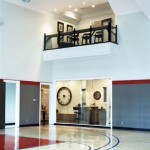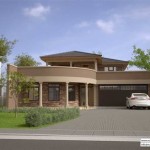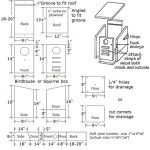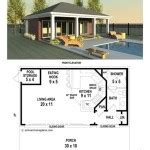Tree House Design Plans: Build Your Dream Treetop Retreat
The allure of a tree house transcends age, evoking feelings of adventure, tranquility, and a unique connection with nature. Constructing a tree house, however, requires careful planning and execution, far beyond simply nailing boards to branches. Detailed tree house design plans are essential for a safe, functional, and aesthetically pleasing treetop retreat. These plans encompass structural considerations, material selection, building techniques, and integration with the existing environment.
A well-defined plan acts as a roadmap, minimizing errors, optimizing resource use, and ensuring the final structure meets the desired specifications. This article will explore key aspects of tree house design plans, providing insights into the considerations necessary for building a dream treetop sanctuary.
Evaluating the Host Tree(s) and Site Conditions
The foundation of any successful tree house project lies in the careful evaluation of the prospective host tree(s). The health, maturity, species, and branching structure of the tree are crucial factors that directly influence the design and construction process. A certified arborist can provide an expert assessment, identifying potential issues such as disease, decay, or structural weaknesses that could compromise the tree house's integrity.
Tree species vary widely in their suitability for supporting a tree house. Hardwood species like oak, maple, and ash generally offer greater strength and stability compared to softer woods such as pine or poplar. The trunk diameter and branching pattern will dictate the size and shape of the tree house, as well as the method of attachment. Ideally, a tree should have a minimum trunk diameter of 12 inches at the proposed building height to provide sufficient support. Multiple trees can be incorporated into the design to distribute the load and create a larger platform.
Beyond the tree itself, the surrounding site conditions must be thoroughly assessed. Factors such as soil type, drainage, prevailing winds, and proximity to other structures or utilities can impact the design and construction. A soil analysis can determine the load-bearing capacity of the ground and inform the design of ground-based supports if required. Understanding the direction and intensity of wind exposure is crucial for ensuring the tree house's stability and resistance to wind damage. Local building codes and zoning regulations should also be consulted to ensure compliance and avoid potential legal issues.
Structural Design and Load Considerations
The structural design of a tree house is paramount to its safety and longevity. A comprehensive design must account for all potential loads, including the weight of the structure itself (dead load), the weight of occupants and furniture (live load), and environmental loads such as wind and snow. Engineering principles should be applied to calculate the required strength and stability of the supporting beams, joists, and platforms.
Several different attachment methods can be employed to connect the tree house to the host tree(s). These methods range from simple through-bolting to more sophisticated systems that allow for tree movement and growth. Through-bolting involves drilling holes through the trunk and securing the structure with bolts. This method is relatively simple but can cause damage to the tree if not properly executed. Floating attachment methods, such as treehouse attachment bolts (TABs) or flexible treehouse connectors (TLCs), allow the tree to grow and move independently of the structure, minimizing stress on both the tree and the tree house. These systems are generally preferred for larger or more complex tree houses.
The framing of the tree house platform should be designed to distribute the load evenly across the supporting members. This can be achieved by using a grid of beams and joists that are properly sized and spaced. The deck surface should be constructed from durable, weather-resistant materials such as pressure-treated lumber or composite decking. Railings and safety barriers are essential to prevent falls and should comply with relevant building codes. The structural integrity of the entire tree house should be verified by a qualified structural engineer to ensure it meets all safety requirements.
Material Selection and Construction Techniques
The choice of materials plays a significant role in the durability, aesthetics, and environmental impact of a tree house. Selecting materials that are both strong and weather-resistant is crucial for long-term performance. Pressure-treated lumber is a common choice for framing and decking due to its resistance to rot and insect damage. However, it's important to use lumber that is treated with environmentally friendly preservatives. Alternative materials such as cedar, redwood, or composite decking offer natural resistance to decay and can enhance the aesthetic appeal of the tree house.
The construction techniques employed should be appropriate for the selected materials and the specific design of the tree house. Accurate cutting and assembly are essential for ensuring a structurally sound and visually appealing result. Using high-quality fasteners, such as stainless steel screws and bolts, can prevent corrosion and ensure long-term durability. Proper waterproofing and sealing are crucial for protecting the structure from moisture damage. This includes applying sealant to all joints and connections, and using flashing to prevent water from penetrating the exterior walls.
Minimizing the impact on the host tree(s) is a paramount consideration during construction. Avoid unnecessary pruning or damage to the bark. Protect the root system by avoiding heavy equipment near the base of the tree. Use lightweight tools and equipment whenever possible to reduce stress on the tree. Consider incorporating environmentally friendly building practices, such as using recycled materials, minimizing waste, and preserving existing vegetation.
Integrating Utilities and Amenities
The level of comfort and functionality desired in a tree house will influence the integration of utilities and amenities. Simple tree houses may only require basic lighting and ventilation, while more elaborate designs may include plumbing, electricity, and even heating and cooling systems. Careful planning is essential to ensure that these utilities are installed safely and efficiently, without compromising the integrity of the tree or the environment.
Electrical wiring should be run in conduit to protect it from damage and moisture. Ground fault circuit interrupters (GFCIs) should be used in all electrical outlets to prevent electric shock. Plumbing lines should be insulated to prevent freezing in cold climates. Water supply can be obtained from a nearby source or from a rainwater harvesting system. Waste disposal options may include composting toilets or connection to a septic system.
Lighting can be provided by solar-powered lights, LED fixtures, or traditional electric lights. Ventilation can be achieved through windows, vents, or a small fan. Heating and cooling systems can be installed using portable heaters, air conditioners, or even a small wood-burning stove (with appropriate safety precautions). Consider the aesthetic impact of these utilities and try to integrate them seamlessly into the design. Choose energy-efficient appliances and lighting to minimize environmental impact.
Safety Considerations and Accessibility
Safety is of utmost importance when designing and building a tree house. The design should incorporate features that minimize the risk of falls, injuries, and other hazards. Railings and safety barriers should be installed around all elevated platforms and walkways. Stairs, ladders, or ramps should be designed for easy and safe access. The use of non-slip surfaces can prevent slips and falls.
Accessibility should also be considered, particularly for users with mobility limitations. Ramps or gentle slopes can provide access for wheelchairs or walkers. Wider doorways and hallways can accommodate mobility devices. Consider incorporating features that make the tree house more accessible to people of all ages and abilities. Regular inspections and maintenance are essential for ensuring the continued safety of the tree house. Check for signs of wear and tear, damage to the structural components, and any potential hazards. Repair any issues promptly to prevent accidents.
A well-designed tree house should blend seamlessly with its surroundings, enhancing the natural beauty of the environment. Consider the aesthetic impact of the structure and choose materials and colors that complement the existing landscape. Incorporate natural elements into the design, such as plants, vines, and rocks. Minimize the visual impact of the tree house by using camouflage netting or natural screening. Creating a tree house that is both safe, functional, and aesthetically pleasing requires careful planning, attention to detail, and a respect for the natural environment.

12 Tree House Expert Tips For Your Dream Hideaway Arch2o Com

Treehouse Plans Custom Tree House Design By Expert Builders

A Man Built Tree House In 30 Days Start To Finish Youtube

Tree Top Builders Custom Houses Expert Treehouse Design

The Finger Lakes Wraparound 1 Tree 2 Post Treehouse Plan

What You Should Know Before Building A Treehouse Home Texture

Want The Treehouse Guys To Build Your

Tree House Design Treelofts Com

20 Best Treehouse Ideas For Your Perfect Outdoor Space 2025

Micro La Tree House Is A Contemporary Dream Retreat
Related Posts








